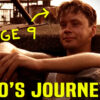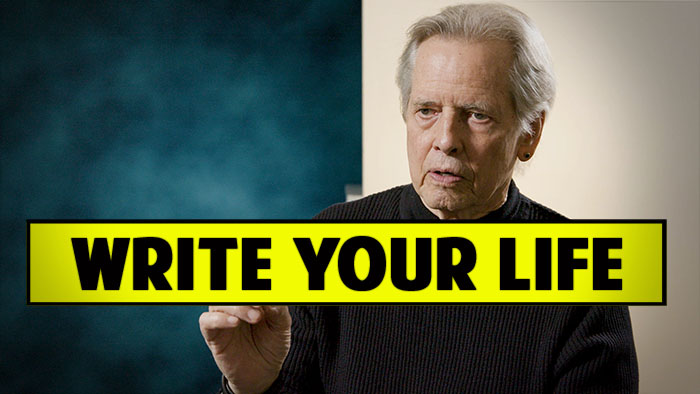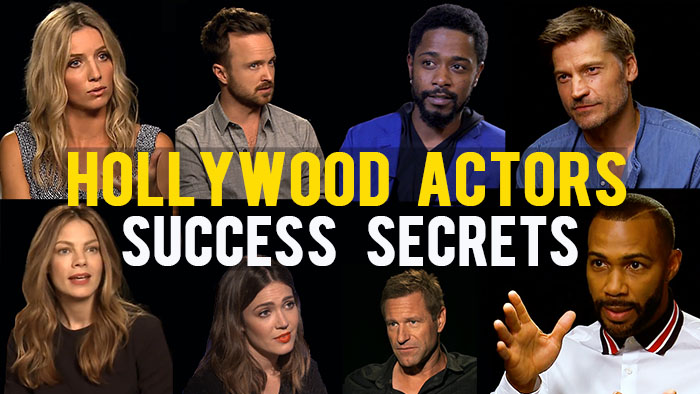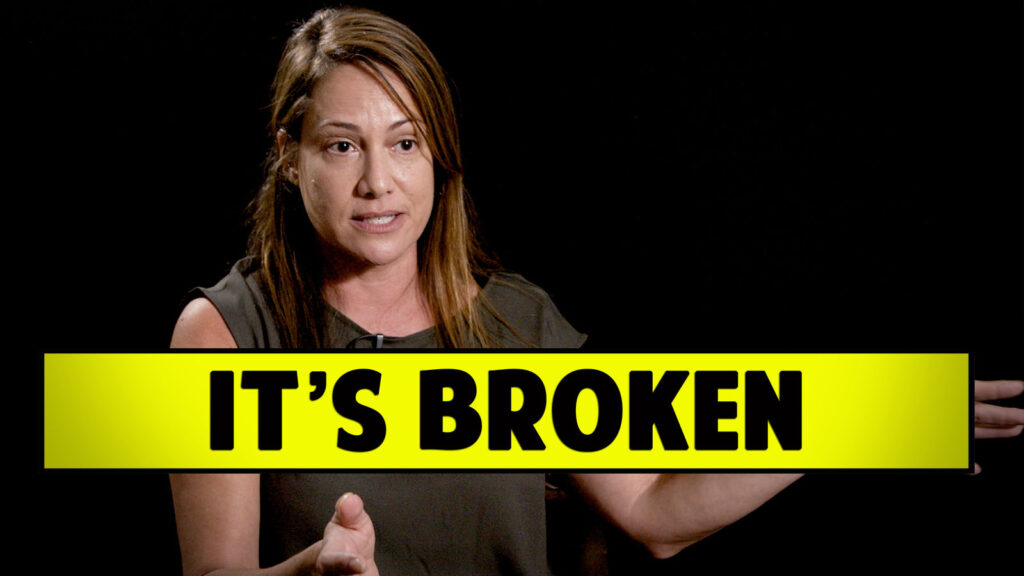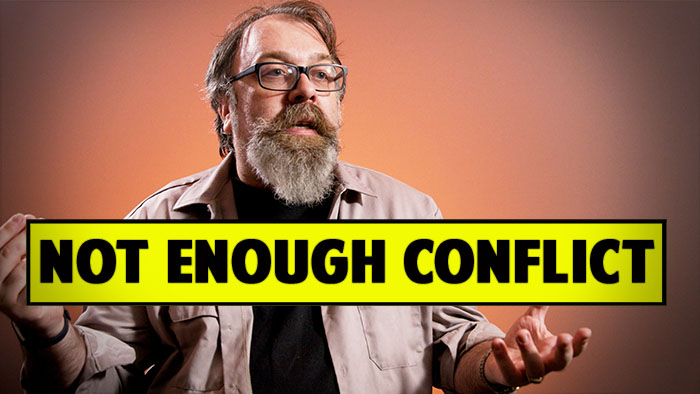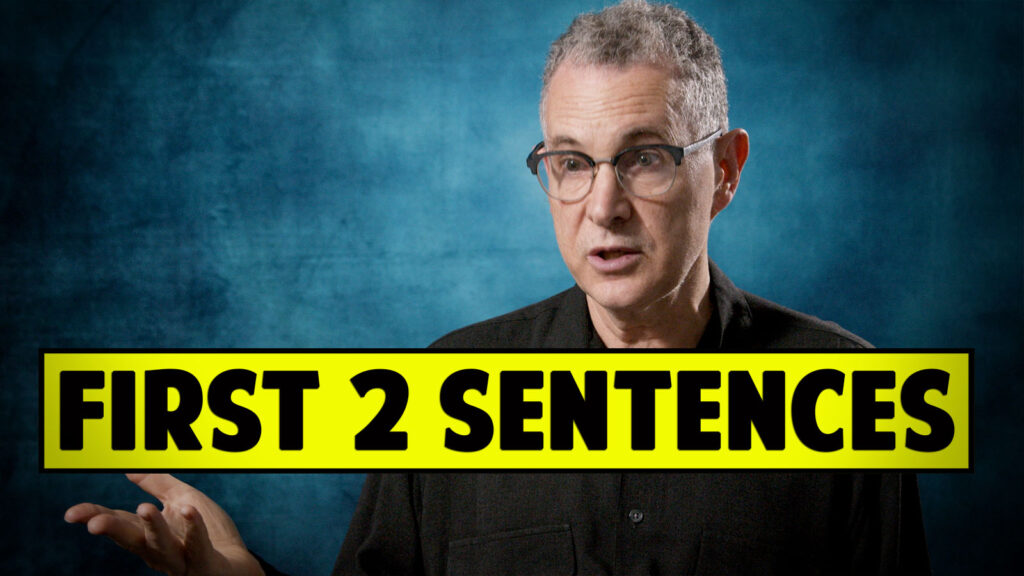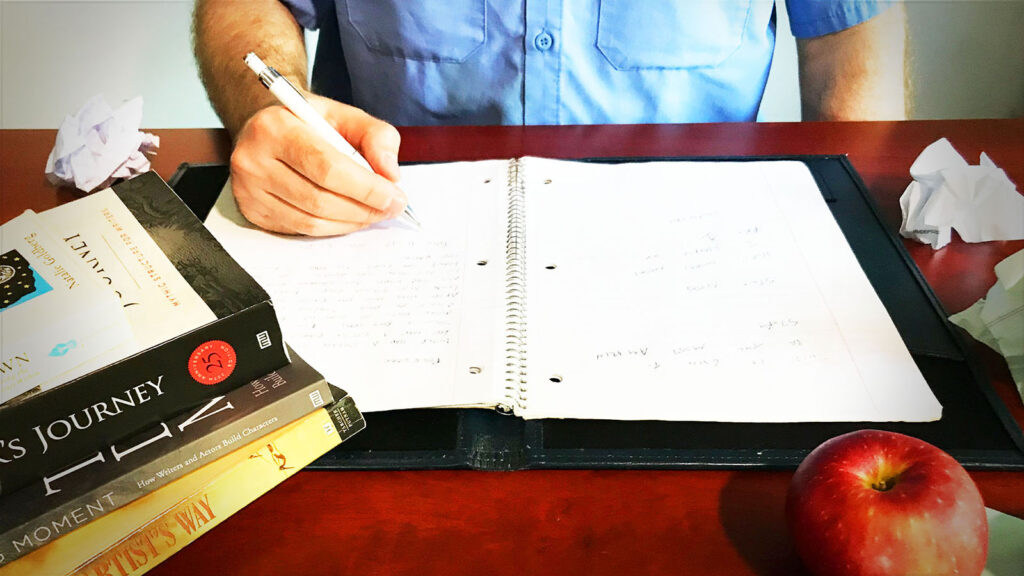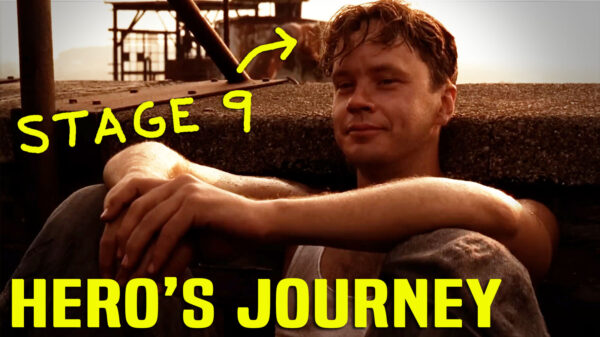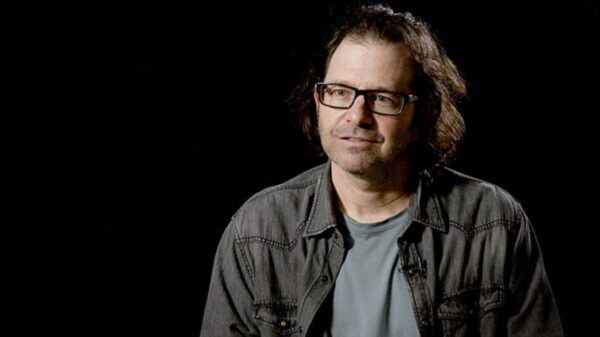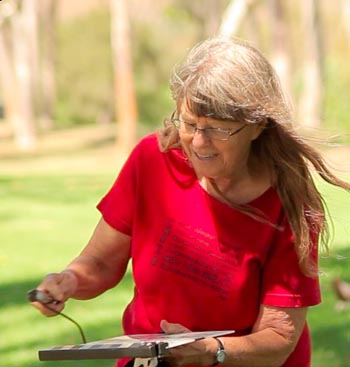
CAROLFRANCES LIKINS – FILMMAKER
Making a film and having it become one of the twenty-two finalists in a contest might not seem to be a major event – after all, the running time was less than four minutes. But then, it was my first completed film, and since I’ve been trying to do this since… Let’s see…
I first learned, long ago, that I was a writer when I found a paragraph of mine in our church bulletin. Having mine chosen out of those of seventy-two second-graders was a child’s version of receiving an Oscar. And much later when I came to realize that movies start off by someone writing down their daydreams, I knew that was the path I wanted to take.
Later still, when I was struck by the realization that films could help heal our world, my determination to contribute to this was born.

These decades of teaching, activism and traveling keep evolving into stories for screenplays. Writing them is easy (writer’s block isn’t something I’m familiar with); getting someone to buy them and make them into movies is the part that has not been happening. I pitch a story and I’m told (this was in 2004), “I love your story but, after 9/11, the studios won’t do anything about police brutality; it’s considered unpatriotic.”
I’m founding an organization called Breakthrough! to support filmmaking with a social conscience.
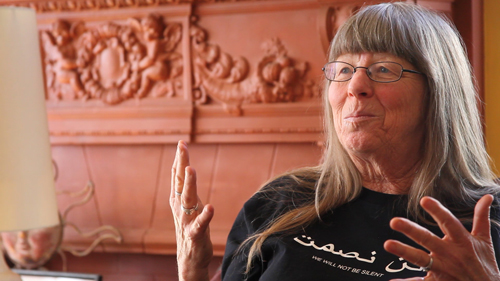
‘Choose to be Happy’ by Writer/Teacher/Activist Carolfrances Likins – Watch the short film with Carolfrances here…
In the meantime, I think about producing my own films. However, I really don’t have any desire to produce and direct; I’d rather find a talented group of people who share my vision who want to collaborate with me. But awhile ago, it occurred to me that I needed to produce and direct my shorts. So I started gathering a group together to materialize my shortest screenplay onto the screen. Two years later, my second film, all of six minutes, is about to be completed.
Did I say “second”? Yes. For while that piece was waiting around in post-production for the people volunteering their time to get to it, another film was inspired, conceptualized, written, cast, shot, edited, and uploaded – in just under a month.
A group I belong to – NewFilmmakers L.A. – sent out a call for films about our city. There was a time restriction: the films had to be under four minutes. They had to be positive, so that means they weren’t looking for us to address homelessness or any of our serious problems, not even if we focused on such positive movements as ex-gang members reaching out to youth to keep them off the paths they had walked. They basically wanted ads for the tourism industry to use to lure people here.
So maybe I was taking a chance by creating a film about what I love about my city instead of highlighting the tourist attractions we have. But the name of the contest is “What’s your L.A.?” And what I love about my city is its ethnic diversity. That might not be what the tourism folks want to use to bring people here, but that’s what I would celebrate in my film.
For me, this is it. I have a friend who praises the natural beauty of his paradise in the mountains, and I asked him about the people’s ethnicities. “We’re mostly white,” he answered, to which I replied, “I couldn’t live there.” I love trees but I couldn’t go back to living in an area full only of people who look like me.
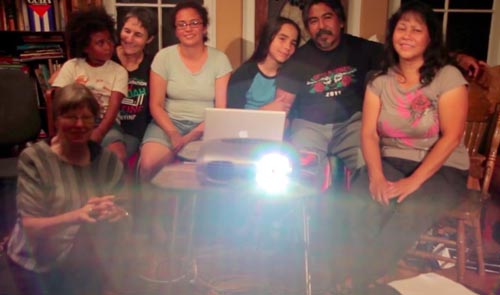
I now live in an L.A.’s Koreatown neighborhood, peopled by Salvadoran refugees and Mexican immigrants and their descendants. There are also a few of us people who are usually called “white.” Oh, and did I mention Korean Americans? We have an Islamic Center and a Buddhist Meditation Center within walking distance of my ethnically diverse little apartment building.
There are ninety-two languages spoken in the homes of children in the Los Angeles School District.
That’s my L.A.
But the first challenge was to come up with an under-four-minute film about that. (I’m a screenwriter; I write screenplays for narrative films, not documentaries.) But when the idea for a story about children discovering the wealth of diversity popped into my mind, the screenplay just about wrote itself: a story of children wanting to travel the world; since their working-class parents can’t afford that, they take them on the next best thing: a global tour of Los Angeles.
I conceived of the idea and then had to write it into four pages. Writing a feature-length screenplay is easy, but could I shove my idea into so short a screenplay? When I wrote it out, it was five pages: too long if the “one page = one minute” rule actually works. But I hoped I could produce this in the one-month window of the contest and then do a longer version afterwards.
The next step was finding a cast and crew – with a deadline less than a month away and no budget. My other film was filmed in one location in a half day; this one has eleven locations in nine different neighborhoods of the city; could I get a cast and crew to volunteer to run all over with me?
Fortunately, I belong to another group called The Table, a group of filmmaking people who get together to share what we do and what we need. I announced what I needed and soon had a crew who loved my idea and wanted to be at my service for the month.
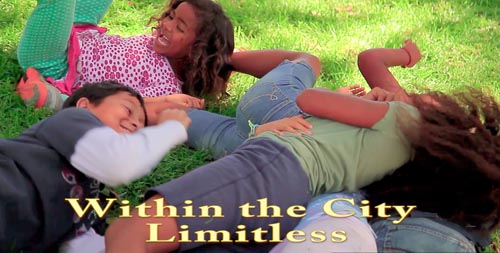
I then put out an email to a handful of friends who have children; three families with four children gave me my main cast: Ayanna (a few weeks short of 7), whose mama is Salvadoran American and whose papa is African American; Nayelli and Carlos (8 and 12) of Mexican Heritage; and our self-described “Persiapino” (Persian and Filipino) Kamran (10).
That the film was actually made in the month was a stunning act of faith and determination from our dedicated cast and crew. Gary, our cinematographer and editor, was our only professional; when I saw his previous work online I was in awe. As it turned out, he was not only extraordinarily skilled but was also determined that I (who had next to no experience) should be telling him what to do. Besides Gary, we had A-yia, a camera operator who took direction from him, as well as Cindy and Paula who did sound recording (having been trained by Gary), and Mack who later did some vital assistant editing. The parents were great too. Paula also started working as my assistant director in the middle of production, once I found out what an AD is and realized how much I needed someone to take care of problems I hadn’t foreseen coming up. Finally, my Bolivian friend Mario gave me permission to use a perfect piece of his Andean flute music from his band’s album.
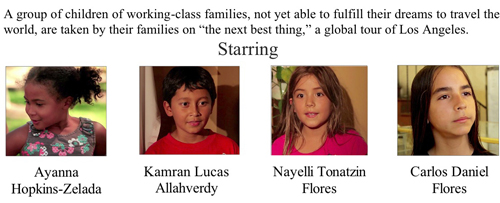
All these volunteers working for the love of the project!
Besides being inexperienced, I tend to be scattered: fiction writers are daydreamers, not necessarily people of the most focused minds. I’d tell the actors where to stand, Gary would tell me what to say to the camera and sound people, I’d say it and wait. Why are they just standing there? Then someone would say, “Carolfrances, call ‘Action.’ ” Oh, that’s right: I’m directing this thing.
Gary taught me – and reminded me until I learned – to look over his or A-yia’s shoulders to see if what’s on their little screens is what I want. He was determined to not only give the best of his vision and skills but to bring out the director in me. I had some overcoming to do: when I’m around people who know so much more than I do, I tend to back off and let them lead. But Gary never let the opportunity pass by to remind me that I was the writer-director-producer, to push me into its leadership.
Thanks.
We finished our filming as the deadline drew dangerously close. The day we had to upload it was the day of our final editing. Looking over Gary’s shoulder at his computer, making decisions with him, I learned much of the science of editing and a whole lot more of the art of it. I felt like a “real” director – which I was, of course, but realizing it was an amazing experience.
We had to cut our film down to length. We removed one great scene and trimmed a lot. But it was done: I had directed and produced my first film, all of 3 minutes and 51 seconds.
When I received the notice that Within the City Limitless was one of the twenty-two entries chosen to be screened, I was exhilarated. We didn’t win any prizes that night, but when I asked how many films had been entered into the contest, we were told “Oh, hundreds!” That’s all we needed to hear. And the children got to see themselves up there on the screen and hear people laugh and applaud for them. And afterwards, many people came up to them and expressed their enjoyment of their work, photographing them, giving them the star treatment. It was a wonderful night.
The most recent part of the story is this: Carlos was in a store and a worker asked him, “Weren’t you just in a short film.” Turned out, this store worker had gone to the screening event.
Besides planning our extended version, I already am playing with ideas for my next year’s entry.

More about our organization, Breakthrough!, at: BreakthroughIndies.org.
To see Within the City Limitless, please visit here and watch the trailer below.
BIO:
As a writer, activist, and retired teacher, I have stories that keep forming themselves into screenplays in effort to get out onto the big screen.
My stories come from having and sharing in extraordinary lives. They come from two and a half decades teaching in inner cities and traveling to places like Cuba, Nicaragua, and Palestine, as well as being one of the hundreds who slept in tents on L.A City Hall’s front lawn as part of the global Occupy Movement. And they come from absorbing written and spoken thoughts of people with a fascinating depth of experiences which are never transmitted through the supermarket magazine racks nor commercial radio waves.
I look for ways not just to get mine up there in front of millions of people, but also those with the hidden lives which our people (globally as well as nationally) need to experience if we are to build a more humane world. This is the wealth of stories the 99% need to hear but which the 1% all too often have an interest in keeping buried. For these, I am organizing a network, Breakthrough!, to unite these living stories with filmmakers who would work passionately on getting them up there. (BreakthroughIndies.org)
I have recently collaborated to turn two of my very short screenplays into no-budget films, Within the City Limitless and Mother Earth Speaks.

Carolfrances at the LA Metro Station
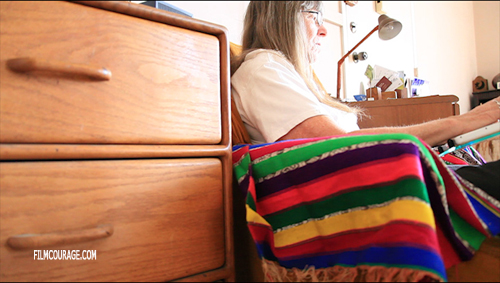
Carolfrances at the computer “The typewriter is mightier than the sword.”
Writer/Activist/Teacher/Filmmaker Carolfrances Likins shares her life experience growing up in Sunland, CA. While in the safety of the 1950’s Sunland suburbs, she learned to be a good patriot and never met anyone who had experienced oppression. As time went on (in the 1960’s), Carolfrances attended a meeting for the United Farm Workers. That one meeting was a turning point in her life and shifted how she viewed the world.
Carolfrances began informing people about Cesar Chavez and the working conditions of farm workers, leading her to teach in Compton, CA. She was warned that people in the “inner city” would object to her being there and cause problems. However, instead she found anything but this. This experience led to her teaching for 25 years in Watts.
Retired from teaching, Carolfrances continues her passion for activism, screenwriting and the joy of children.
For more information on Carolfrances Likins, please visit: Breakthroughindies.org
The film features Carolfrances and musician/singer friend
and neighbor, Paula Solomon.





.jpg)

